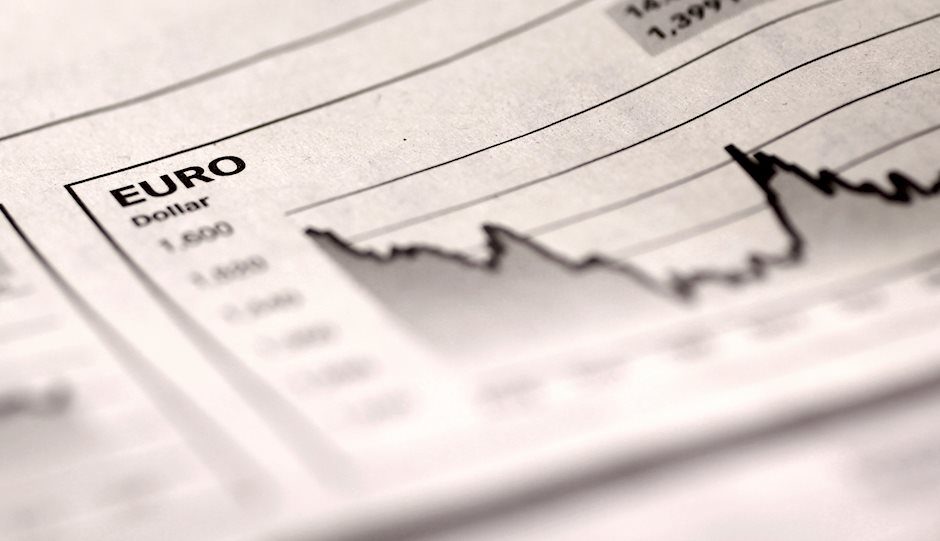EUR/USD hangs near its lowest level since mid-August, seems vulnerable around 1.0975 area
- EUR/USD enters a bearish consolidation phase after last week’s downfall to mid-1.0900s.
- The USD preserves the post-NFP gains to a multi-week top and caps the upside for the pair.
- Bets for another ECB rate cut in October undermine the Euro and further act as a headwind.

The EUR/USD pair kicks off the new week on a subdued note and consolidates last week's heavy losses to its lowest level since mid-August touched in the aftermath of the upbeat US employment details on Friday. Spot prices currently trade around the 1.0975 region and seem vulnerable to prolong the recent sharp pullback from a 14-month top – levels just above the 1.1200 mark.
The US Dollar (USD) stands tall near a seven-week top as traders further trimmed their bets for another oversized interest rate cut by the Federal Reserve (Fed) in November on the back of surprisingly strong US jobs data. The headline NFP showed that the economy added 254K jobs in September, surpassing consensus estimates by a big margin, and the Unemployment Rate unexpectedly slipped to 4.1%. This provided evidence of a still resilient US labor market, while higher-than-expected growth in the Average Hourly Earnings revived inflation fears, smashing hopes for a more aggressive policy easing by the Fed.
In fact, the current market pricing indicates a nearly 95% chance that the Fed will lower borrowing costs by 25 basis points at the end of a two-day policy meeting on November 7. Adding to this, persistent geopolitical risks stemming from the ongoing conflicts in the Middle East assisted the USD Index (DXY), which tracks the Greenback against a basket of currencies, to register its best week since September 2022. The shared currency, on the other hand, continues to be undermined by bets that the European Central Bank (ECB) will cut rates again in October on the back of easing inflationary pressures and economic slowdown.
The expectations were reaffirmed by comments from ECB Governing Council member François Villeroy de Galhau, saying that the central bank will cut rates in October as weak economic growth raises the risk that inflation will undershoot the 2% target. This, in turn, is seen as another factor acting as a headwind for the EUR/USD pair and supports prospects for a further near-term depreciating move. Hence, any attempted recovery might still be seen as a selling opportunity and runs the risk of fizzling out rather quickly.
Fed FAQs
Monetary policy in the US is shaped by the Federal Reserve (Fed). The Fed has two mandates: to achieve price stability and foster full employment. Its primary tool to achieve these goals is by adjusting interest rates. When prices are rising too quickly and inflation is above the Fed’s 2% target, it raises interest rates, increasing borrowing costs throughout the economy. This results in a stronger US Dollar (USD) as it makes the US a more attractive place for international investors to park their money. When inflation falls below 2% or the Unemployment Rate is too high, the Fed may lower interest rates to encourage borrowing, which weighs on the Greenback.
The Federal Reserve (Fed) holds eight policy meetings a year, where the Federal Open Market Committee (FOMC) assesses economic conditions and makes monetary policy decisions. The FOMC is attended by twelve Fed officials – the seven members of the Board of Governors, the president of the Federal Reserve Bank of New York, and four of the remaining eleven regional Reserve Bank presidents, who serve one-year terms on a rotating basis.
In extreme situations, the Federal Reserve may resort to a policy named Quantitative Easing (QE). QE is the process by which the Fed substantially increases the flow of credit in a stuck financial system. It is a non-standard policy measure used during crises or when inflation is extremely low. It was the Fed’s weapon of choice during the Great Financial Crisis in 2008. It involves the Fed printing more Dollars and using them to buy high grade bonds from financial institutions. QE usually weakens the US Dollar.
Quantitative tightening (QT) is the reverse process of QE, whereby the Federal Reserve stops buying bonds from financial institutions and does not reinvest the principal from the bonds it holds maturing, to purchase new bonds. It is usually positive for the value of the US Dollar.
Author

Haresh Menghani
FXStreet
Haresh Menghani is a detail-oriented professional with 10+ years of extensive experience in analysing the global financial markets.

















